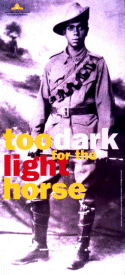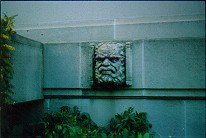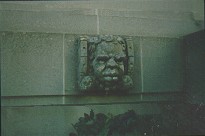
INTERPRETATIONS and EXHIBITIONS |

Unfortunately there has been only one dedicated exhibition on Aboriginal and Torres Strait Islander soldiers. This well researched production is entitled "Too Dark for the Light Horse" and is a joint Australian War Memorial - David Huggonson production. It is a 'touring' exhibition which has seen it taken around Australia to capital cities and to 'remote' Aboriginal and Torres Strait Islander communities. "Too Dark" is a small exhibition researched, interpreted and produced predominately by non-Indigenous Australians.
"Too Dark" is currently on in the Temporary Gallery of the Australian War Memorial in Canberra.
There is no permanent exhibition or interpretation of Indigenous ANZAC's in any public or private museum in Australia. The Australian War Memorial does lightly address this imbalance by placing some pictures of Indigenous soldiers in their galleries. This consists of a painting of the late Reginald Saunders in the Korean War Gallery and a photograph of an unknown Aboriginal digger in one of the hallways. A photograph of a Koori digger is also in the Vietnam War gallery. Recently in the temporary exhibition area - an exhibition entitled "1918 - Australians In France" featured a single panel detailing the death of Pte Reginald Rawlings M.M. in 1918. His panel was one of approximately twenty within the temporary exhibition.
Within the recently overhauled World War Two gallery at the Australian War Memorial there is a single panel, and one artwork exhibited. On the panel is an account of the moving of civilians from Darwin to safer areas to the south when the Japanese were bombing the North in 1942. The informant for the Aboriginal account is Mary Lee, a friend of mine from Darwin. I took part in the consultation process which the Memorial conducted approximately 18 months ago with the members of the local Indigenous community.
AUSTRALIAN WAR MEMORIAL CLOISTERS
The Australian War Memorial, completed in 1941 features many interesting architectural styles and patterns. One of the most interesting is along the Roll of Honour cloisters. Along here you will find "Australian Native Fauna", included among these are the faces of an Aboriginal man and woman! This is very typical of the attitudes of the time when Aboriginals were counted in the National Census along with sheep and cattle.
These two faces are not very well known, I'v asked numerous staff members at the Memorial about them and they had not the faintest idea of what I was talking about. These two faces are significant as they are the only permanent Aboriginal aspect of the War Memorial.

Aboriginal man's face, facing West.

Aboriginal woman's face, facing East.